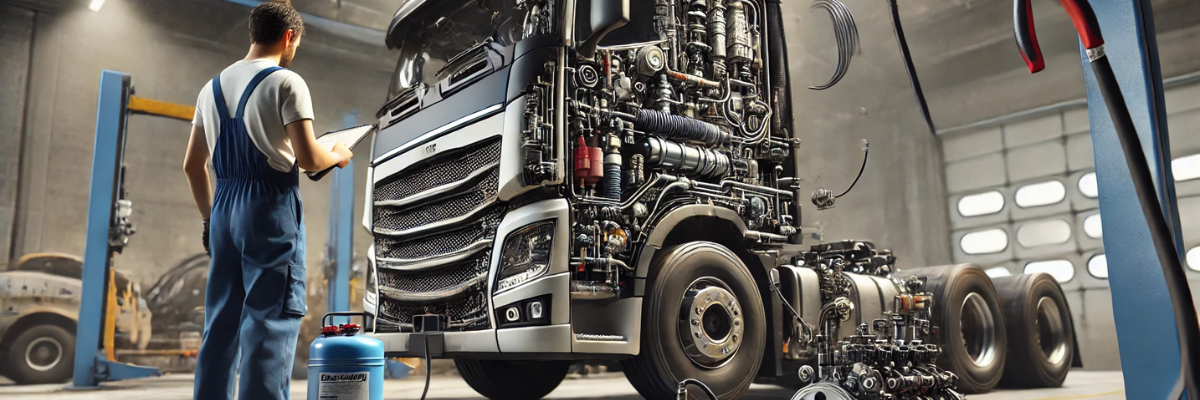A well-maintained hydraulic system is crucial for ensuring your truck operates efficiently, safely, and reliably. Regular maintenance helps prevent costly repairs, minimize downtime, and extend the life of critical components.
In this guide, we will cover 15 essential maintenance steps, including troubleshooting common hydraulic problems, expert recommendations, and preventative measures to keep your truck’s hydraulic system in top condition.
Check and Replace Hydraulic Fluid Regularly
Why It’s Important: Hydraulic fluid acts as the power transmitter and lubricant for your system. Old or contaminated fluid can lead to overheating, cavitation, and system failure.
When to Check:
- Before each operation, inspect fluid levels and quality.
- Change hydraulic fluid every 1,000–2,000 hours or as recommended by the manufacturer.
Signs of Bad Fluid:
- Milky appearance (indicates water contamination)
- Metal shavings (suggests internal wear).
- Burnt smell (signs of overheating).
Inspect and Replace Hydraulic Hoses and Fittings
Why It’s Important: Worn-out hoses and loose fittings can cause leaks, reduce pressure, and lead to system inefficiencies or failures.
When to Check:
- Perform a weekly visual inspection for cracks, wear, or leaks.
- Check fittings before each operation for tightness.
- Pro Tip: Use OEM-approved replacement hoses to ensure compatibility and longevit
Troubleshooting:
- Problem: Hose leaks or bursts.
- Solution: Immediately replace the hose and check for signs of pressure spikes in the system
Monitor the Hydraulic Pump for Performance Issues
Why It’s Important: The hydraulic pump is the heart of the system. If it fails, the entire system loses power and function.
When to Check:
- Listen for unusual noises (whining, knocking)
- Check for vibrations or overheating during operation.
Troubleshooting:
- Problem: Pump makes a whining noise.
- Solution: This could indicate cavitation (air in the system). Bleed the system and check for fluid restrictions.
- Pro Tip: Regularly clean or replace the intake screen/filter to prevent debris from clogging the pump.
Change Hydraulic Filters on Time
Why It’s Important: Hydraulic filters trap contaminants, preventing damage to valves, cylinders, and pumps.
When to Replace
- Every 500–1,000 hours or as per the manufacturer’s guidelines.
- Pro Tip: Always use high-quality filters that meet or exceed OEM specifications.
Troubleshooting:
- Problem: System pressure drops unexpectedly.
- Solution: A clogged filter may be restricting flow. Replace it immediately and check for contaminants in the fluid.
Inspect Hydraulic Cylinders for Wear and Leakage
Why It’s Important: Hydraulic cylinders convert fluid energy into mechanical force. Leaks or damage reduce system efficiency.
When to Check:
Inspect monthly or after heavy use.
Pro Tip:
- Check for oil leakage at the rod seals and cylinder connections.
- Look for scoring or pitting on the piston rod.
Troubleshooting:
- Problem: Cylinder isn’t extending or retracting smoothly.
- Solution: Replace worn seals, check for air in the system, and verify proper fluid levels.
Detect and Fix Hydraulic System Leaks
Why It’s Important: Even small leaks cause pressure loss, contamination, and increased operating costs.
When to Check:
- Before and after each operation.
- Pro Tip: Use a UV dye leak detection kit to quickly find leaks in hoses and fittings
Troubleshooting:
- Problem: Slow hydraulic response time.
- Solution: Inspect for hidden leaks—even small leaks reduce system efficiency.
Monitor Operating Temperature to Prevent Overheating
Why It’s Important: Excessive heat degrades hydraulic fluid, leading to seal damage and reduced performance.
When to Check:
Regularly monitor system temperature during operation
Troubleshooting:
- Problem: Hydraulic system overheating.
- Solution: Check for clogged coolers, insufficient fluid levels, or excessive load on the system
Bleed Air from the Hydraulic System
Why It’s Important: Air pockets cause erratic operation, excessive noise, and cavitation.
When to Bleed the System:
- After replacing components.
- After a significant fluid loss due to leaks.
- Pro Tip: Follow manufacturer-approved bleeding procedures to ensure all air is removed.
Troubleshooting:
- Problem: Spongy or jerky hydraulic movement.
- Solution: Bleed the system properly to remove trapped air.
Maintain Hydraulic Valves and System Pressure
Why It’s Important: Faulty valves lead to pressure fluctuations and inefficient operation.
When to Inspect:
Check pressure levels regularly using a gauge.
Troubleshooting:
- Problem: Pressure too low.
- Solution: Inspect for leaks, faulty relief valves, or a failing pump.
Train Operators on Best Practices
Why It’s Important: Incorrect operation causes premature wear and system damage.
When to Train:
- Provide regular refresher courses for operator
- Pro Tip: Train operators on early warning signs of hydraulic issues to prevent breakdowns.

